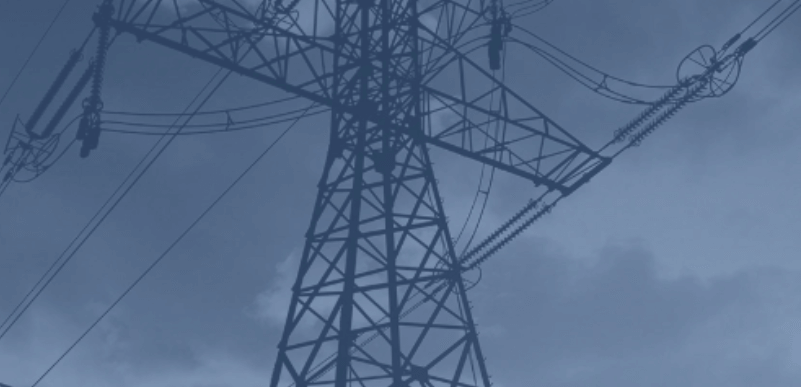Product News
January 28, 2019
Traveling Wave Relay Testing

When we last spoke with Shijia Li, in November, she told us about Protection Relay Testing. She has since been made team leader for Protection and Smart Grid team within OPAL-RT’s AXES (Application, eXpertise and Electrical Simulation) division. This time, she is speaking to OPAL-RT Product News about OPAL-RT’s HIL Traveling Wave Test System.
—
Interviewer (IV): “Hello Shijia. First, can you tell us when we introduced the Traveling Wave test system?”
Shijia Li (SL): “We developed it about 1.5 years ago.”
IV: “Our software has been simulating faults on FPGAs for a while; why hadn’t we used this method previously?”
SL: “Previously, the FPGA had not been used for protection system testing. It was used for simulating power electronics devices, or motors or drives, but not to simulate a power system with transmission lines, etc. This was the first time we’d tested the power system components on the FPGA; it was a new way to use the FPGA. It has the fast time step required to precisely locate (within a few meters) and diagnose faults on power system lines.”
IV: “So prior to that, all protection was run on CPU? How did we make this breakthrough?”
SL: “This actually came about because of a request from a client. They built a device containing an algorithm and needed a way to test it. The conventional tests [Editor’s note: CPU-based] wouldn’t work with their device, so we had to use an FPGA model to achieve a much smaller time step. We had an engineer developing a model–more of a mathematical model–to make it run much faster on an FPGA. That innovation also prompted us to improve our solver. The client’s engineers were so impressed with the results from our constant parameter (CP) line model that they’re eager to see our frequency dependent (FD) line
IV: “So we currently have two different line models?”
SL: “As of now, we only have the CP line model, but our R&D department is finalizing the FD line model.”
IV: “What’s the difference between the two models?”
SL: “The FD line model more accurately represents overhead lines than the CP model. It has a richer harmonic content, which represents with higher fidelity a line during a fault; with the FD line model, we’ll be able to test single-ended TW fault locating algorithms, which is more challenging.”
IV: “Impressive. This is a fairly new innovation, then, FPGAs being used to do work this precise, in this context?”
SL: “Yes. The travelling wave is a very high-frequency phenomenon, so it requires faster simulation as well as faster hardware. Our usual I/O boards take one sample every microsecond, which is sufficient for simulations in the range of 10 to 50 µs, but when simulating the travelling wave phenomenon at 500 ns on the FPGA, we need I/O boards that can follow at this speed, to get better accuracy. Fortunately, we already have a board with a sampling rate of 2 MS/s.”
IV: “What did utilities do before this? Did they simply say, ‘there’s a fault somewhere between kilometre 364 and 365’, for example?”
SL: “We could say that. There are other ways of detecting the fault location that
IV: “This was a breakthrough in terms of narrowing the range?”
SL: “Yes, absolutely. And this idea was floated a long time ago, but, at the time, the relay itself didn’t have enough computational power. The processor wasn’t fast enough to run the algorithm. But since technology has evolved, they can implement it on the hardware. To understand how much of a breakthrough that is, you have to look at it in the operational context. When there’s a fault on a line, there are some strategies that can be used to avoid sending out a team to investigate. These strategies vary from one utility to the next and are based on the environment around the fault location. Since there aren’t cameras everywhere, some assumptions must be made.”
“For example, in rural areas, some might successively reclose and reopen breakers to try and clear a fault (in case a tree fell on a line, for example) to liberate the line. If every automated strategy fails, or, in dense urban areas, it is most often necessary to send out a team to investigate, which can be very costly. If the team has to search over a few kilometres for the location of the fault, it can take a lot of time. It’s even more difficult, for obvious reasons, with cables that are buried underground. Travelling wave relays might mean a high-cost reduction in many cases. This is the breakthrough.”
IV: “This is an HIL process, right?”
SL: “Yes, this is a hardware-in-the-loop (HIL) process, but obviously not on the lines themselves. There are testers that can be used in the field to perform simple signal injection tests. But what we’re doing is more in the lab: we’re using the same devices, the same settings. The device we are testing is monitoring the line. What we’re doing is we’re replacing that actual power line with our simulator: we send signals to the device, but the device is monitoring the lines on the simulator.”
IV: “And the larger context for this is control and protection, one of your specialties. Was travelling wave testing something people had wanted to do for a while?”
SL: “Well, it is not a new idea, but it’s not that long since it has actually been put into use. It is a new feature, and we do have customers expressing interest in it. Generally speaking, in the context of the protection industry, this would be considered an innovation: it’s not been widely used or adopted by most utilities. And we’re seeing some of our clients out there in the early stages, trying to convince people to adopt this technology.”
IV: “How does this technology fit in, in terms of the industry in general?”
SL: “The protection and control sectors are very well-established, mature sectors or fields, within the power system industry. The current devices and schemes or implementations we have are good enough to protect most power systems. For now, there are some new perspectives—the broader introduction of renewable energy—that may introduce some new challenges. And travelling wave technology, which brings a challenge in terms of testing: this is ultimately why we’re developing this solution.”
“The microgrid also, and its protection, is a very hot topic in this field. Other than that, from the communication-aided protections: we use more and more fibre optics, so that’s something we could test as well. And that brings us to the IEC61850 digital substation concepts [Editor’s note: Product News blog post to come]: so let’s say, with one relay now, we can do a lot of complex functions and so, of course, the testing becomes exponentially more complex as well.”
IV: “Thanks for speaking with us again, Shijia.”
—About the Interviewee

Shijia Li received her Bachelor’s degree from Zhejiang University, China in 2012 and Master’s degree from McGill University, Canada in 2015, both in the field of power engineering. She joined OPAL-RT in March 2015, where her work focuses on power system modelling and real-time simulation applications with protective relays and PMUs. Shijia is actively involved in developing technical solutions and providing advanced training to help users better utilize real-time simulation techniques for exploring the latest P&C/smart grid technologies. Currently, Shijia leads the Protection and Smart Grid team in OPAL-RT’s AXES (Application, eXpertise and Electrical Simulation division).















